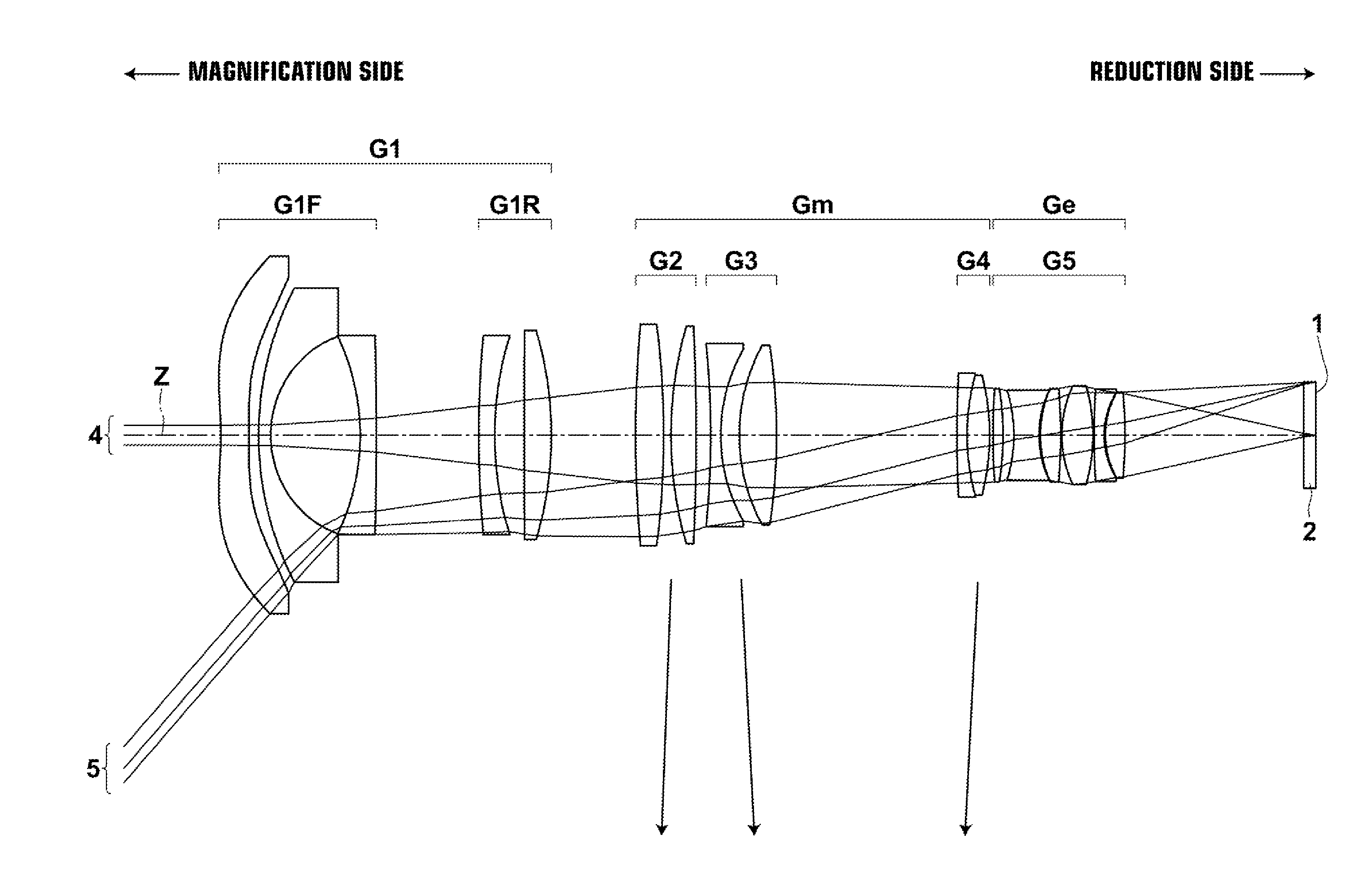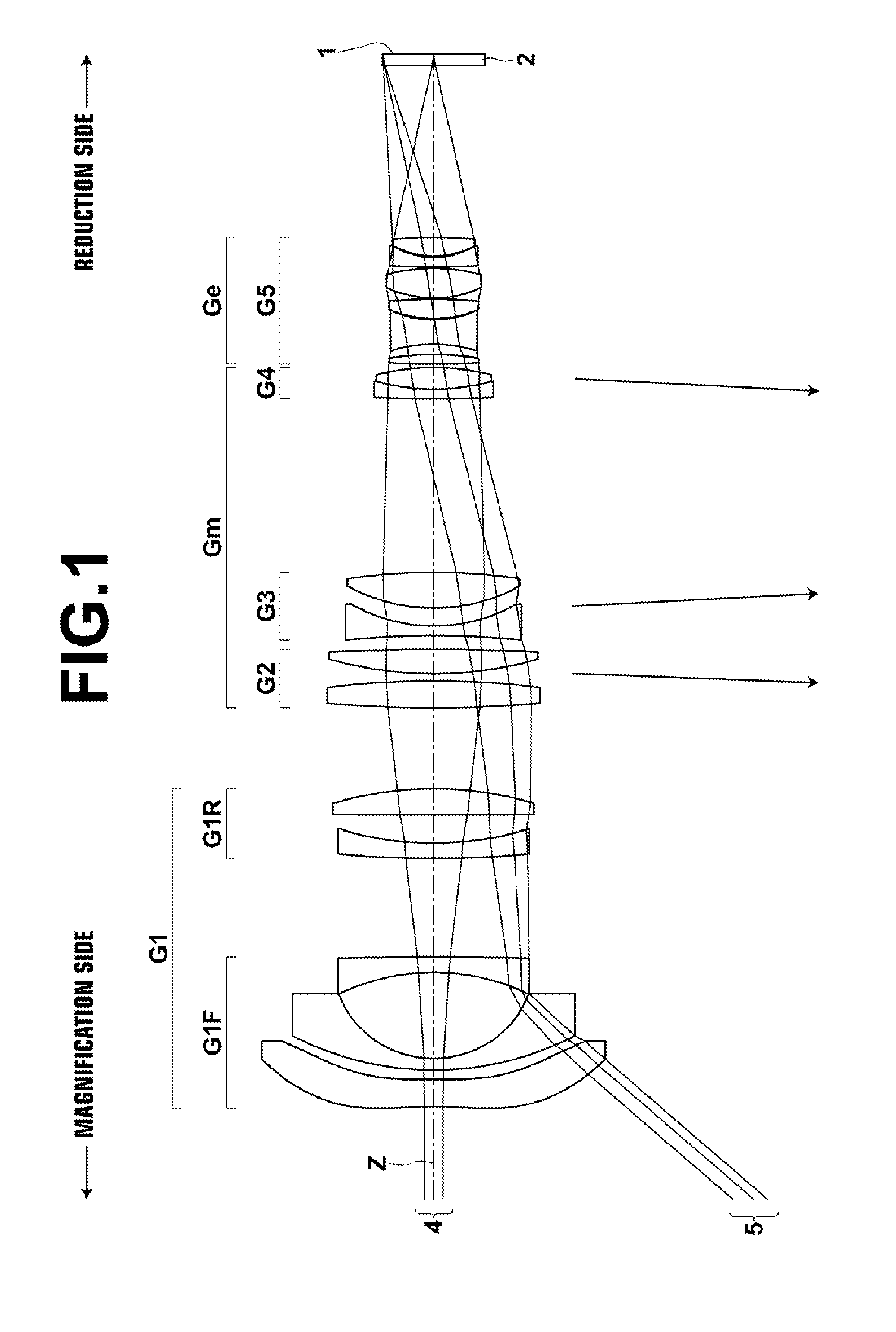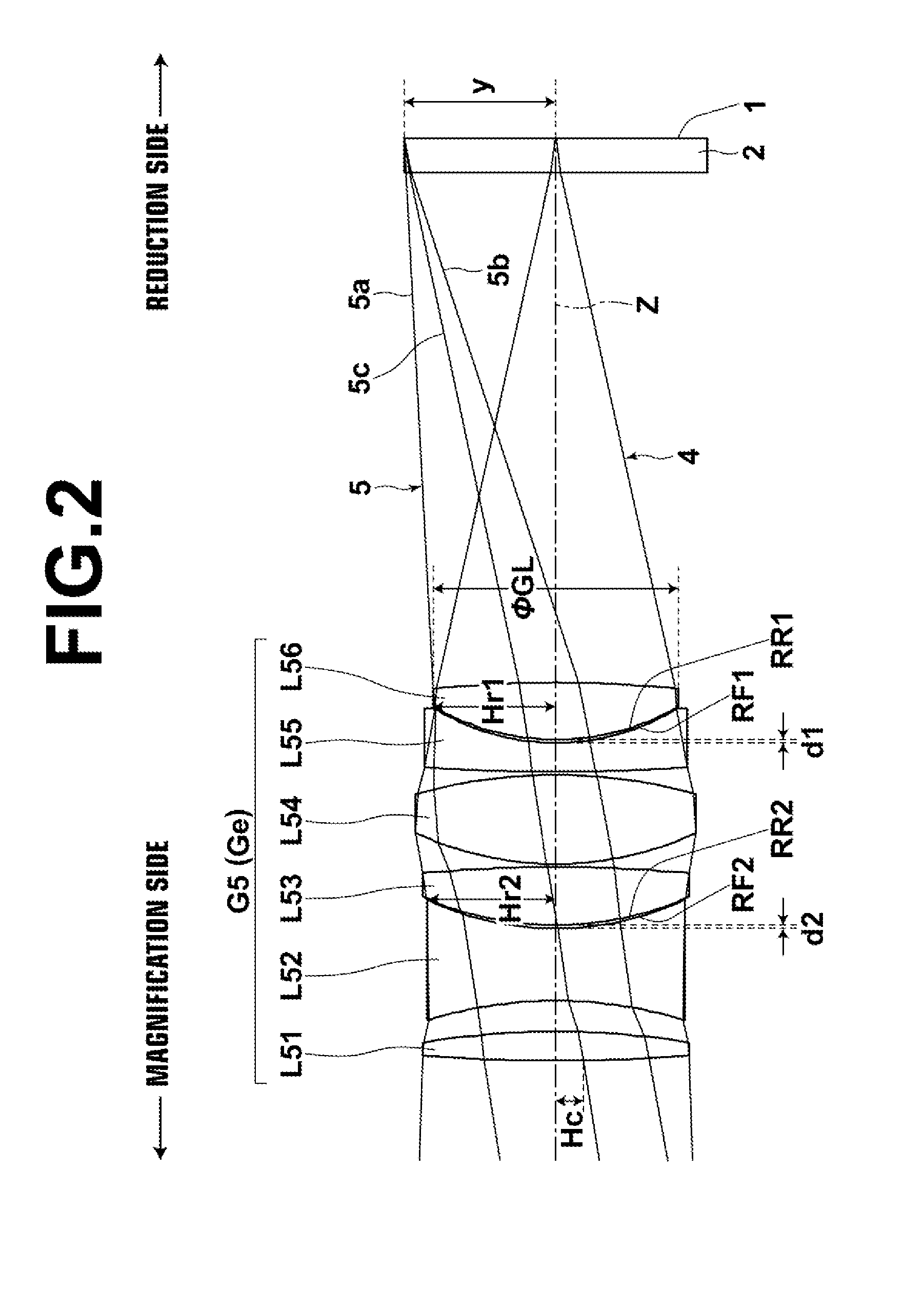Zoom lens for projection and projection-type display apparatus
a technology of projection and display apparatus, applied in the field of zoom lens for projection and projection type display apparatus, can solve the problems of difficult reduction in the size of the lens, long total length, large magnification-side lens diameter, etc., and achieve the effect of reducing the size of the apparatus, reducing the diameter of the reduction-side lens, and appropriating back focus
- Summary
- Abstract
- Description
- Claims
- Application Information
AI Technical Summary
Benefits of technology
Problems solved by technology
Method used
Image
Examples
example 1
[0217]FIG. 4 is a diagram illustrating a cross section of the zoom lens for projection in Example 1 and paths of rays. In FIG. 4, the arrangement and configuration of each lens group at a wide-angle end, a middle focal length state and a telephoto end is illustrated in a top row, a middle row and a bottom row, respectively, to which signs W, M and T are given on the left side of FIG. 4. Further, in FIG. 4, axial rays 4, rays 5 at a maximum image height, a parallel-flat-plate-shaped optical member 2, which is assumed to be various filters, a cover glass or the like, and an image display surface 1 of a light valve located on a reduction-side surface of the optical member 2 are also illustrated. Further, arrows schematically indicating the directions of movement of each lens group when magnification is changed from a wide-angle end to a middle focal length state, and from the middle focal length state to a telephoto end are also illustrated between the top row and the middle row, and b...
example 2
[0237]FIG. 5 is a diagram illustrating a cross section of the zoom lens for projection in Example 2 and paths of rays. In the zoom lens for projection of Example 2, the group configuration, the schematic configuration of each lens group, and a focusing method are almost similar to the zoom lens for projection in Example 1. The zoom lens for projection in Example 2 differs from Example 1 in that fifth lens group G5 consists of seven lenses of L51 through L57. Table 4, Table 5 and Table 6 show basic lens data of the zoom lens for projection in Example 2, aspherical coefficients, and specification for d-line and values of variable surface distances, respectively. FIG. 20, Sections A through L and FIG. 21, Sections A through L are aberration diagrams of the zoom lens for projection in Example 2. In Example 2, a reference projection distance is 119.17, and a closest projection distance is 58.61.
TABLE 4SiRiDiNdjνdj*1−6.22850.61051.4910057.58*2−36.58840.334135.81970.26171.6385455.3842.3080...
example 3
[0238]FIG. 6 is a diagram illustrating a cross section of the zoom lens for projection in Example 3 and paths of rays. In the zoom lens for projection of Example 3, the group configuration, the schematic configuration of each lens group, and a focusing method are almost similar to the zoom lens for projection in Example 1. Table 7, Table 8 and Table 9 show basic lens data of the zoom lens for projection in Example 3, aspherical coefficients, and specification for d-line and values of variable surface distances, respectively. FIG. 22, Sections A through L and FIG. 23, Sections A through L are aberration diagrams of the zoom lens for projection in Example 3. In Example 3, a reference projection distance is 119.12, and a closest projection distance is 58.59.
TABLE 7SiRiDiNdjνdj*1−6.22590.61031.4910057.58*2−36.57290.143235.68200.26151.6385455.3842.49752.03235−7.95380.31091.7725049.6065.4817DD[6] 754.63000.34871.6229958.1688.6925DD[8] 9−27.96240.55281.5163364.1410−7.1216DD[10]1116.86860.6...
PUM
 Login to View More
Login to View More Abstract
Description
Claims
Application Information
 Login to View More
Login to View More - R&D
- Intellectual Property
- Life Sciences
- Materials
- Tech Scout
- Unparalleled Data Quality
- Higher Quality Content
- 60% Fewer Hallucinations
Browse by: Latest US Patents, China's latest patents, Technical Efficacy Thesaurus, Application Domain, Technology Topic, Popular Technical Reports.
© 2025 PatSnap. All rights reserved.Legal|Privacy policy|Modern Slavery Act Transparency Statement|Sitemap|About US| Contact US: help@patsnap.com



